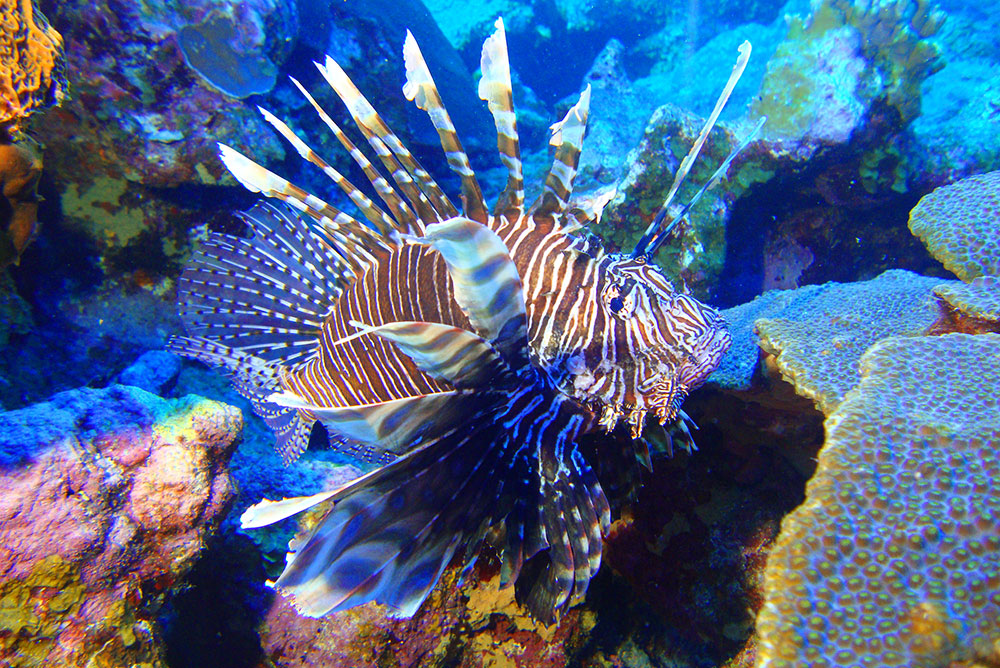FOR IMMEDIATE RELEASE
Oct. 05, 2015
Contacts:
Shelley Du Puy, 409-621-5151 ext. 106
Michelle Johnston 409-621-5151, ext.127
Volunteers remove lionfish from Flower Garden Banks National Marine Sanctuary

Trained volunteers and research partners recently conducted fish surveys and removed 317 lionfish at Flower Garden Banks National Marine Sanctuary in the Gulf of Mexico. The work is part of an effort to better understand the effects of lionfish, an invasive species, on native fish communities and habitats in the sanctuary.
Since 2000, Indo-Pacific lionfish populations have increased in the waters off the southeastern United States, Caribbean and Gulf of Mexico, a serious concern among scientists and resource managers. Lionfish have venomous spines that can be painful to swimmers, divers and fishermen. They can cause significant impacts to local fish populations, and have been documented to eat over 100 species of fish and invertebrates, including commercially important species such as snapper and grouper.
In recent years, national marine sanctuaries have hosted education and outreach events to raise awareness about the lionfish threat, including lionfish derbies where dive teams compete to remove lionfish. In August, 27 volunteers at Flower Garden Banks sanctuary received permits to spearfish for lionfish. Although spear fishing in the sanctuary is illegal, an exception was made as pole spears are the most effective method of capture for lionfish.
Sanctuary and partner researchers will examine the lionfish for age, growth and stomach contents to see which and how many native fish species lionfish are eating.
In addition to the sanctuary, Reef Environmental Education Foundation (REEF), Texas State Aquarium, Fling Charters, Oregon State University and National Marine Sanctuary Foundation supported the event.
“Complete lionfish eradication is not an option with current technology but we have to try to do everything we can to minimize the impact of this unprecedented invasion,” said G. P. Schmahl, sanctuary superintendent. “Control and removal activities at the local scale will help, along with improved monitoring and continued research on lionfish movement and behavior.”
Located 70 to 115 miles off the coasts of Texas and Louisiana, Flower Garden Banks National Marine Sanctuary includes the northernmost coral reefs in the continental United States, deepwater reef communities and other essential habitats for a variety of marine species. NOAA designated the sanctuary in 1992, and Stetson Bank was added to the sanctuary through Congressional action in 1996.
NOAA’s Office of National Marine Sanctuaries serves as trustee for a system of 14 marine protected areas, encompassing more than 170,000 square miles of America’s ocean and Great Lakes waters. Through active research, management, and public engagement, national marine sanctuaries sustain healthy environments that are the foundation for thriving communities and stable economies.
NOAA's mission is to understand and predict changes in the Earth's environment, from the depths of the ocean to the surface of the sun, and to conserve and manage our coastal and marine resources. Join us on Facebook, Twitter
Twitter , Instagram
, Instagram and our other social media channels.
and our other social media channels.

